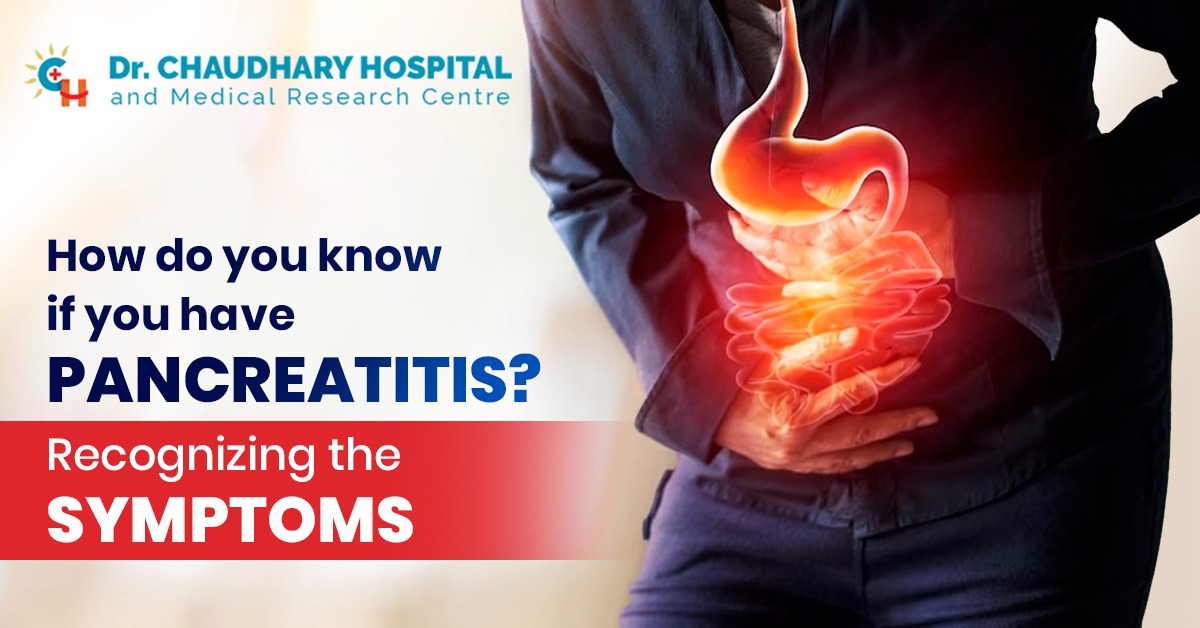Inflammation of the pancreas is called pancreatitis. Immune system activity known as inflammation can result in discomfort, swelling, and alterations to the function of tissues or organs. Pancreatitis is a serious medical condition that affects the pancreas, an organ crucial for digestion and blood sugar regulation. Recognizing the symptoms of pancreatitis is essential for timely diagnosis and treatment. Let’s explore the various signs and symptoms of pancreatitis to help you understand when it’s crucial to seek medical attention.
What is Pancreatitis?
Pancreatitis is the inflammation of the pancreas, which can be acute or chronic. Acute pancreatitis occurs suddenly and typically resolves with proper medical care, while chronic pancreatitis develops over time and can lead to long-term complications.
Acute Pancreatitis – Acute pancreatitis is a sudden inflammation of the pancreas that typically resolves with proper medical care. It often occurs due to gallstones, alcohol consumption, certain medications, infections, or other underlying conditions. Symptoms of acute pancreatitis include severe abdominal pain, nausea, vomiting, fever, rapid pulse, and abdominal tenderness. Prompt medical attention is essential to manage symptoms, prevent complications, and support recovery.
Chronic Pancreatitis – Chronic pancreatitis, on the other hand, is a long-term inflammation of the pancreas that develops gradually over time. It is often associated with ongoing damage to the pancreatic tissue, leading to irreversible changes and complications. Chronic pancreatitis can result from repeated episodes of acute pancreatitis, long-term alcohol abuse, smoking, genetic factors, or certain medical conditions. Symptoms of chronic pancreatitis may include persistent abdominal pain, weight loss, diarrhea, fatty stool, and diabetes.
What are the Common Symptoms of Pancreatitis?
Abdominal Pain
One of the hallmark symptoms of pancreatitis is severe abdominal pain. The pain is often located in the upper abdomen and can radiate to the back. It may worsen after eating, especially meals that are high in fat.
Nausea and Vomiting
Individuals with pancreatitis often experience nausea and vomiting, which may be persistent and severe. These symptoms can contribute to dehydration and further discomfort.
Fever and Chills
Fever and chills are common signs of inflammation or infection in the body, including pancreatitis. If you notice an unexplained fever along with other symptoms, it’s important to consult a healthcare professional.
Rapid Pulse
Pancreatitis can lead to an increased heart rate or palpitations, especially during episodes of acute inflammation. Monitoring your pulse rate can provide additional insight into your health status.
Tenderness or Swelling in the Abdomen
The abdomen may feel tender to the touch, and there might be noticeable swelling or bloating due to inflammation of the pancreas.
Jaundice
In some cases, pancreatitis can lead to jaundice, a condition characterized by yellowing of the skin and the whites of the eyes. This occurs when the inflammation affects the bile ducts, leading to impaired bile flow.
Unexplained Weight Loss
Chronic pancreatitis can interfere with the body’s ability to digest and absorb nutrients properly, leading to unintended weight loss over time.
When to Seek Medical Attention
If you experience any of the symptoms mentioned above, especially severe abdominal pain that persists or worsens, it’s crucial to seek immediate medical attention. Pancreatitis can lead to serious complications if left untreated, including pancreatic necrosis, infection, and organ failure.
Diagnosis and Treatment
Diagnosing pancreatitis typically involves a combination of medical history review, physical examination, blood tests, imaging studies (such as ultrasound, CT scan, or MRI), and sometimes endoscopic procedures to assess the pancreas directly.
Treatment for pancreatitis depends on the severity and type of the condition. In cases of acute pancreatitis, treatment often involves supportive care, such as fasting to rest the pancreas, intravenous fluids to prevent dehydration, pain management, and addressing any underlying causes, such as gallstones or alcohol consumption.
For chronic pancreatitis, treatment focuses on managing symptoms, preventing complications, and addressing any underlying factors contributing to the condition. This may include lifestyle modifications, dietary changes, enzyme replacement therapy, pain management, and in severe cases, surgical intervention.
Conclusion
Recognizing the symptoms of pancreatitis is crucial for early detection and prompt treatment. If you experience persistent abdominal pain, nausea, vomiting, fever, or other concerning symptoms, don’t hesitate to consult a healthcare professional. Timely intervention can help prevent complications and improve outcomes for individuals with pancreatitis.
If you have any concerns about your health or symptoms, please seek guidance from a qualified healthcare provider. Your well-being is important, and early detection can make a significant difference in managing pancreatitis effectively.

